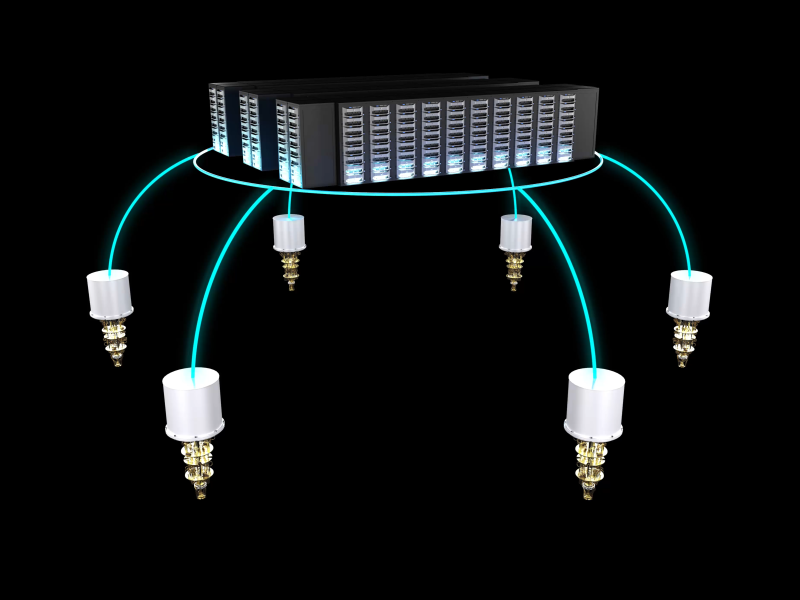
Quantum
Information
Sciences
Quantum
Information
Sciences
Setting the stage for a quantum
computing revolution
Setting the stage for a quantum
computing revolution
Quantum computing is expected to revolutionize our ability to solve difficult problems that are beyond the scope of today’s computers. Many of these problems are central to PNNL core mission areas in chemistry, materials science, and energy resiliency.
Research that supports quantum computing, simulation, communication, and sensing is at the core of PNNL’s quantum information science (QIS) strategy. Our approach is one of co-design, where advances in the fundamental understanding of quantum phenomena lead to more robust quantum computing infrastructure, which leads to better problem solving in a cycle of continuous improvement. This expertise has been harnessed by three DOE-sponsored QIS Research Centers. Broadly, our efforts are focused on complementary and interdependent activities.
Quantum algorithms and software implementations
Existing classical computing approaches are limited in accuracy and efficiency when simulating quantum systems. Quantum chemistry has been identified as a leading application for quantum computing. PNNL is developing quantum computing algorithms and programming models that demonstrate the power of quantum computing with quantum-accelerated applications in advanced materials and catalysts, our traditional areas of strength in energy sciences. Much of this work is built from the backbone of NWChem computational chemistry code.
Materials synthesis and characterization
Quantum computing requires highly tailored, atomically precise materials. We are studying the role of chemical and isotopic purity through synthesis, fabrication, and device application. Using PNNL’s strengths in microscopy and trace analysis, we are conducting material characterization to relate structure and purity to device performance.
Low temperature physics
Cooling of materials to less than one-tenth of a degree above absolute zero is essential for many of the proposed quantum computing architectures. In most cases, devices are operated using adiabatic demagnetization refrigeration (ADR) and 3He/4He dilution refrigeration. At these low temperatures, atoms behave differently. We are studying the behavior of materials of interest to superconducting quantum devices using a suite of advanced analytical instrumentation.
Mitigation of environmental effects
This effort builds on PNNL’s expertise in developing and deploying the world’s most sensitive radiation detectors constructed from ultra-pure materials. Based on this expertise, PNNL is studying how to mitigate environmental disturbances that affect qubit performance through controlling the materials and environment surrounding qubit devices. We teamed with scientists at MIT, together showing that superconducting quantum bits are sensitive to cosmic radiation. That research has led to exploration of the Shallow Underground Laboratory as a potential location for an environmentally shielded quantum computing test bed.
Applying physics to improve QIS devices and sensors
Advancing the development of superconducting quantum computing devices fabricated from well characterized, ultra-precise materials will entail closing the R&D loop with device performance evaluation. PNNL researchers in nuclear and particle physics will draw upon their expertise in sensor performance and operation to assess QIS-oriented superconducting devices to understand and overcome environmental and materials fabrication limitations to operation.
Quantum workforce preparedness
Our commitment to developing a quantum computing infrastructure and workforce is reflected in our robust partnerships with academic and industry leaders in quantum computing. We co-founded the Northwest Quantum Nexus (NQN), a coalition of research and industrial organizations in the Pacific Northwest and neighboring regions. Through the NQN, we offer training and internship opportunities in quantum algorithm and software development.




